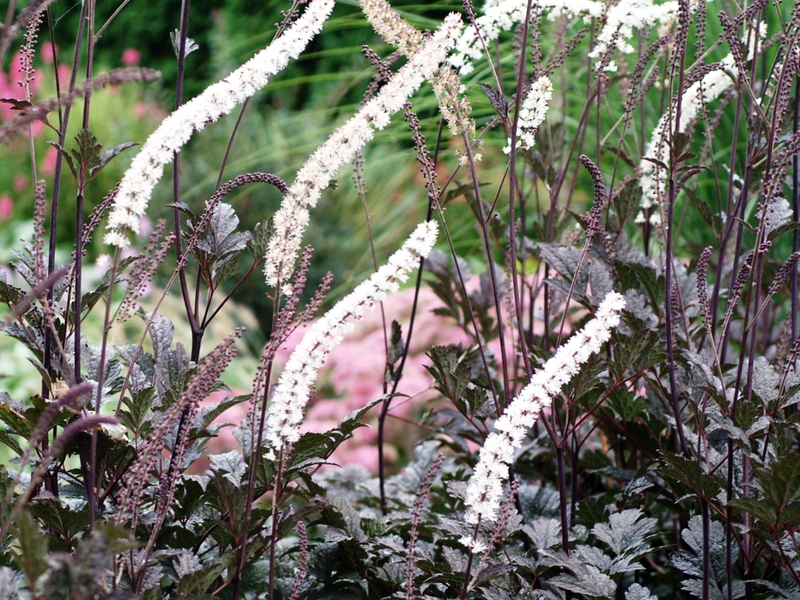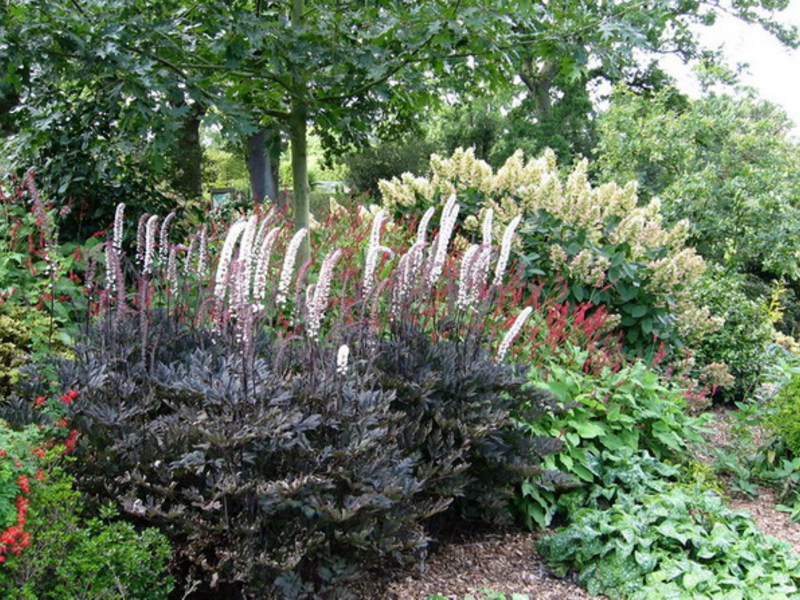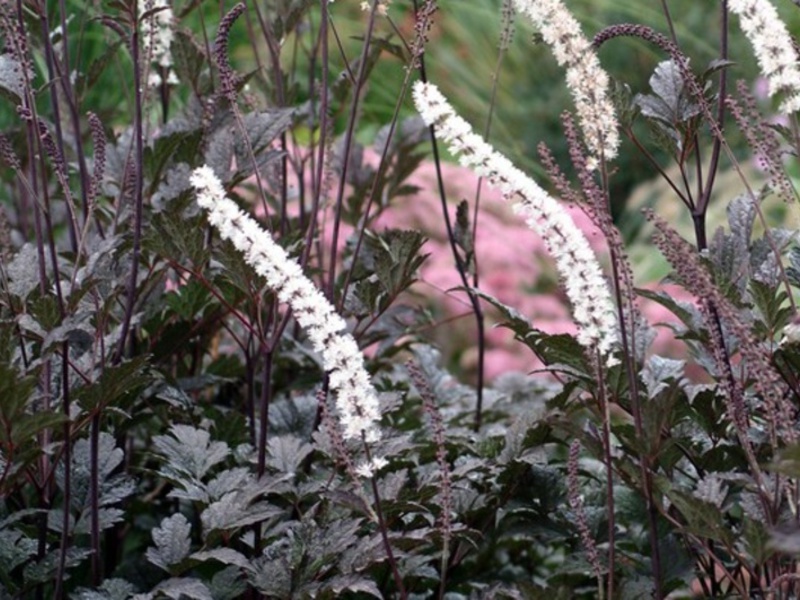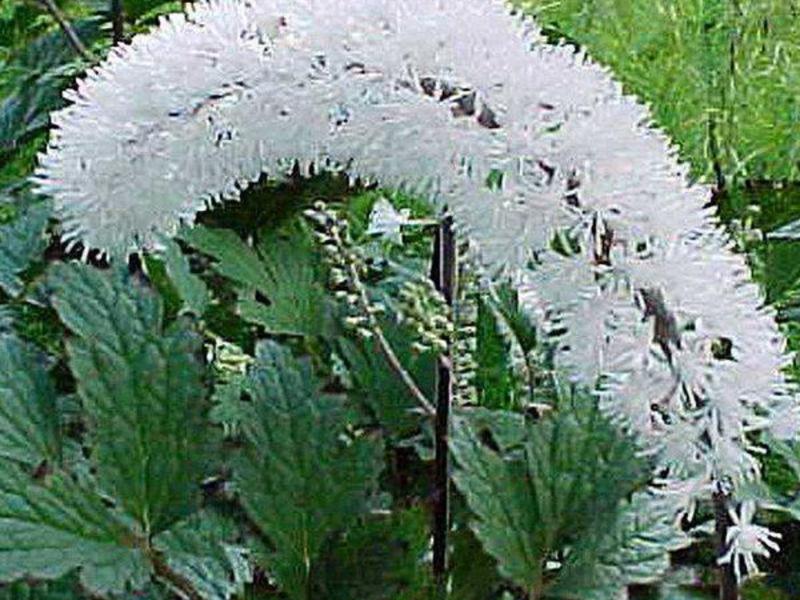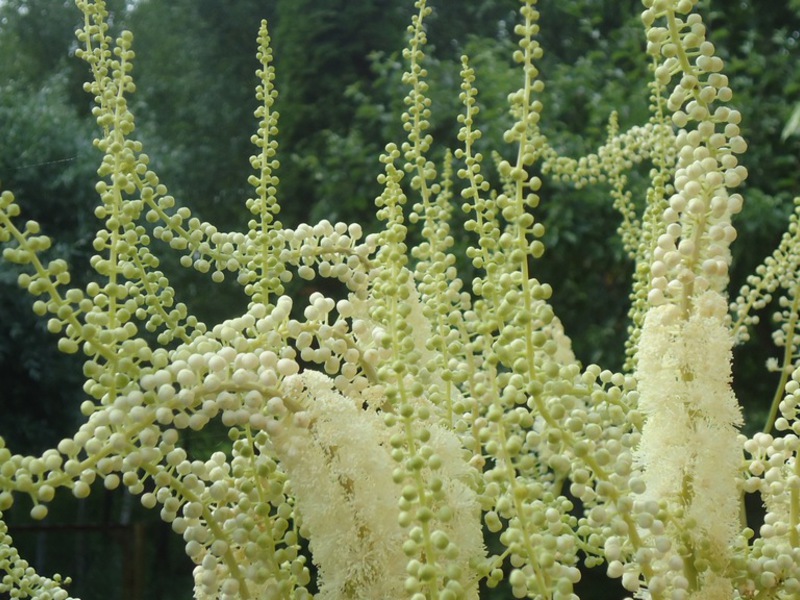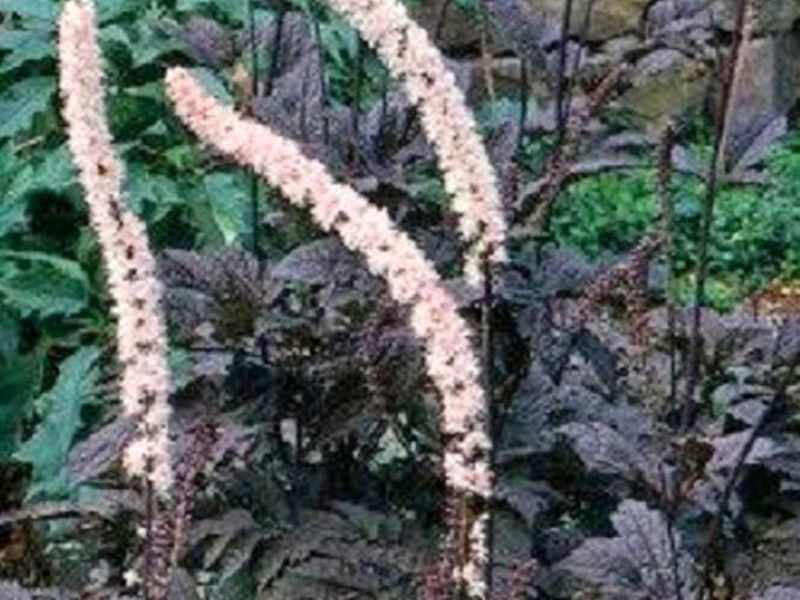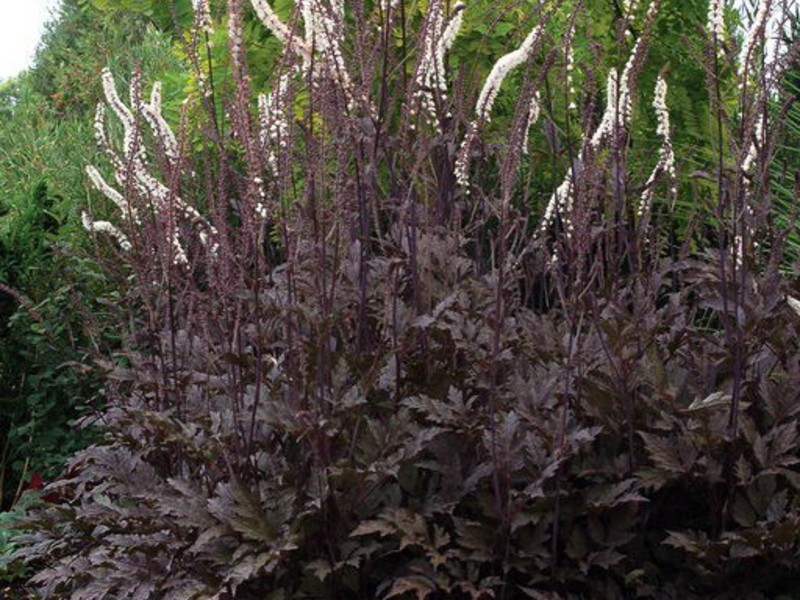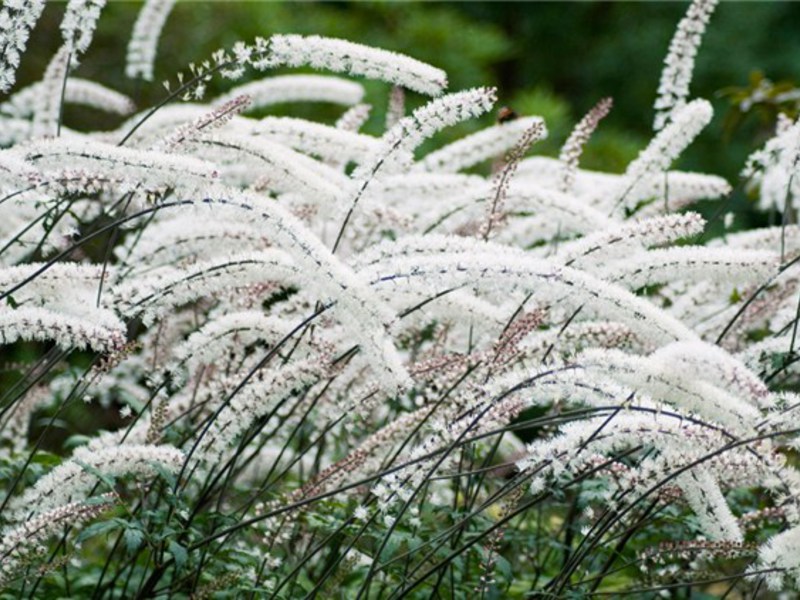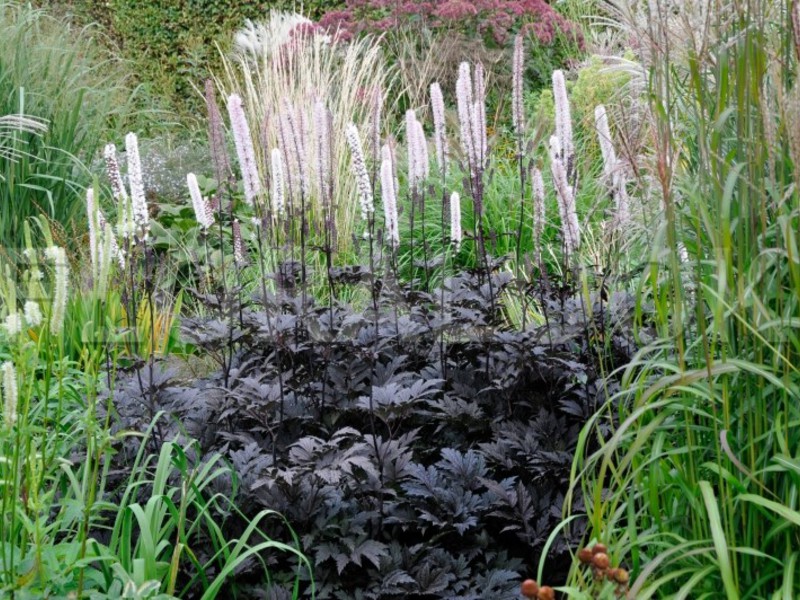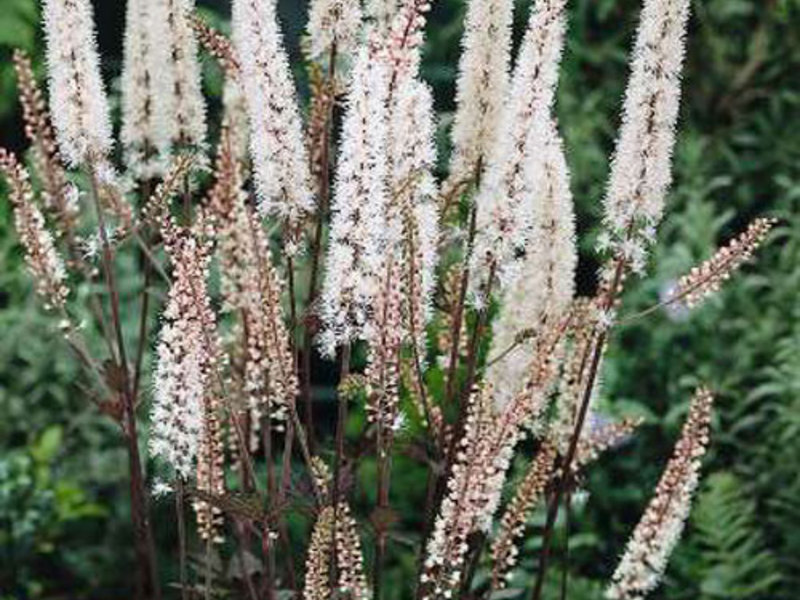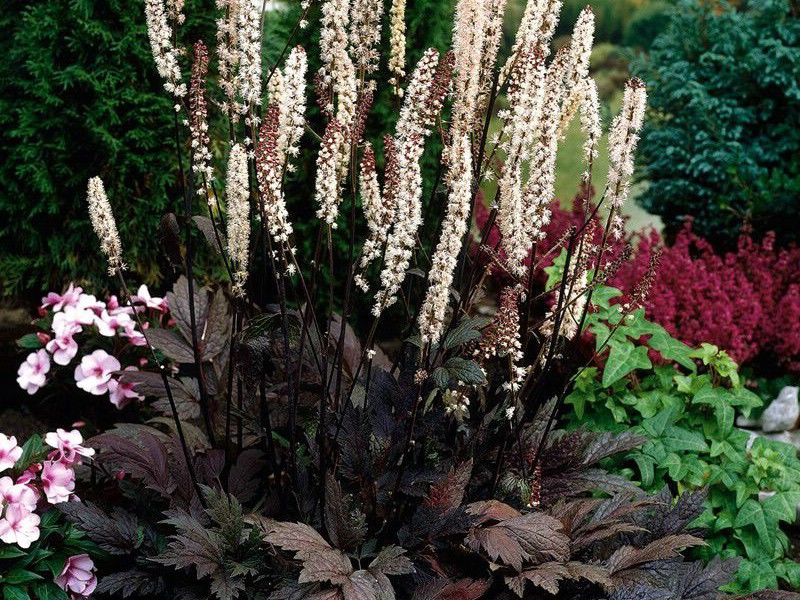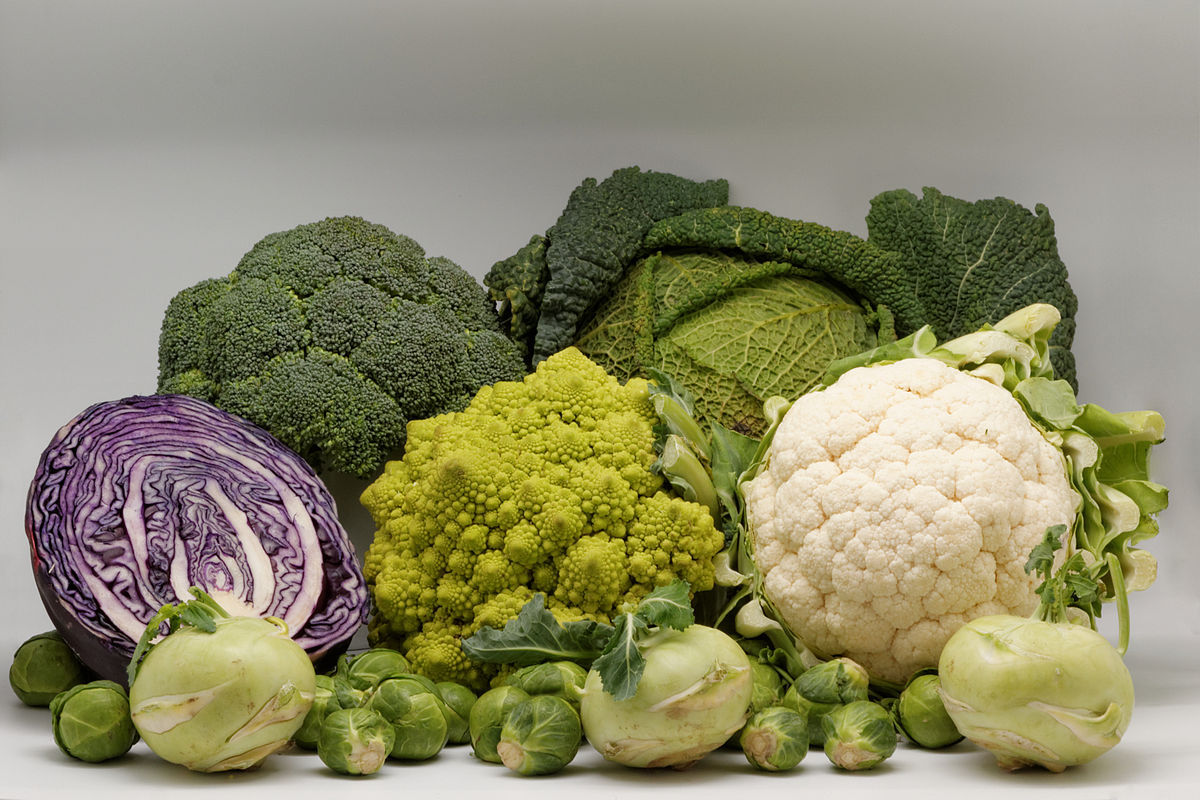Choosing ornamental plants for decorating a summer cottage, the gardener wants them to help achieve the most striking effect. Therefore, it is often possible to find such a plant as a cimicifuga in personal plots. It can be described as a spectacular and airy flower that can present even the most ordinary flower garden in a new light.
It looks no less attractive in those cases when grown singly... This plant can be considered a “muse” for the gardener, therefore, in recent years, it has been widely used in landscape design.
Content
Description of cimicifuga
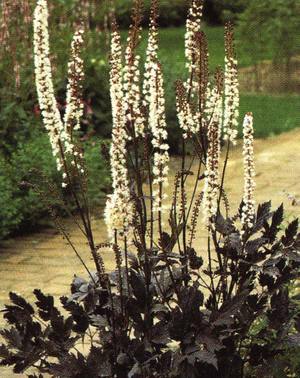 This perennial, familiar to many experienced flower growers, is one of the brightest representatives of the Buttercup family. At this moment 15 species of this culture are known, each of which begins to bloom at a different time. Wild species of black cohosh can be found in Siberia, European mountains, as well as temperate latitudes of North America, China, Mongolia, the Far East and the Japanese Islands. Any species of black cohosh get along well in our climate. After all, they are not afraid not only of spring frosts, but also severe winter cold.
This perennial, familiar to many experienced flower growers, is one of the brightest representatives of the Buttercup family. At this moment 15 species of this culture are known, each of which begins to bloom at a different time. Wild species of black cohosh can be found in Siberia, European mountains, as well as temperate latitudes of North America, China, Mongolia, the Far East and the Japanese Islands. Any species of black cohosh get along well in our climate. After all, they are not afraid not only of spring frosts, but also severe winter cold.
The origin of the name of the cimicifuge is interesting: this word is translated from Latin as "Driving away bugs"... The plant got such an unpleasant at first glance name because of the stinking black cohosh, which is widely used as an insecticide.
It costs only a little damage this perennial, and the air immediately begins to be saturated with an unpleasant-smelling substance. Therefore, it is not surprising that the people often call it "ordinary stinker" or "stuffy root."
This variety is not widely used for decorative purposes. Usually, gardeners prefer varieties that have a more pleasant aroma. The German version more accurately conveys the meaning of the name of this plant, which sounds like "silver candles".
Black cohosh attracts attention not only by its graceful appearance, but also by its structure. Leaves, which are similar to large parsley, have decorative properties, they are formed immediately from a thick tall stem. Inflorescences usually have two forms - spike-shaped and racemose.
In those years when summer is cool, black cohosh may not bloom. However, it still has a considerable number of advantages that are valued in landscape design: vitality, unpretentiousness, frost resistance and durability. It can be grown in one place without transplanting for 25 years... Moreover, from year to year, it will only add to the attractiveness. And even if the name does not sound so beautiful, this does not apply to its decorative properties, because black cohosh is a very colorful and spectacular plant.
Popular black cohosh varieties
Genus black cohosh includes many types, each of which has its own characteristics, therefore it is on them that you need to pay attention when choosing an option for creating flower arrangements.
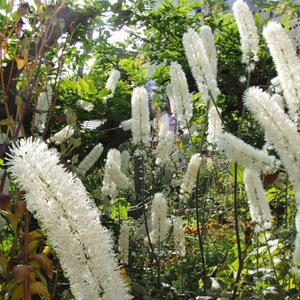 Black cohosh is branched. It is a tall plant that can grow to a height of 2 meters.During the growing season, forms small cream-colored flowers that form large, elongated inflorescences. The leaves of this type of black cohosh have a varied color, which can be red-chocolate, bronze or dark cherry. Flowering occurs unusually late, unlike many plants - in September. However, if there is a lot of rainfall during the season, then the plant may not have enough time to form inflorescences. Therefore, it is undesirable to choose an area in the shade for planting.
Black cohosh is branched. It is a tall plant that can grow to a height of 2 meters.During the growing season, forms small cream-colored flowers that form large, elongated inflorescences. The leaves of this type of black cohosh have a varied color, which can be red-chocolate, bronze or dark cherry. Flowering occurs unusually late, unlike many plants - in September. However, if there is a lot of rainfall during the season, then the plant may not have enough time to form inflorescences. Therefore, it is undesirable to choose an area in the shade for planting.- Black cohosh is simple. The characteristic features of this plant are small drooping inflorescences, which are formed by small flowers. This black cohosh variety has the worst case in cloudy summers, since in such conditions it is highly likely that it will not bloom. Within this group, it is worth highlighting the Brunet variety, which is in demand among many flower growers. It features a bronze-chocolate foliage that retains its rich hue throughout the season. Its white flowers, which turn purple at the moment of blooming, look no less attractive.
- Black cohosh racemose (cimicifuga racemosis). It is a tall perennial plant that usually grows up to 2 meters in height. It is decorated with fragrant inflorescences that have a candle-like shape, which open from bottom to top. Flowering begins in July and lasts until September. At this time of year, the plant transforms as flowers that have a white or cream shade begin to bloom.
- Black cohosh is smelly. This species differs from other species by an unpleasant odor that comes from the aerial part of the rhizome. Many people know this variety under the name "Adam's rib", and he wears it for a reason, because its lower sheets strongly resemble ribs. The tallest are adult specimens, which can reach a height of 2 meters. Black cohosh leaves are large, feathery. Small flowers with a light green color are presented in the form of paniculate inflorescences.
- Black cohosh American. This plant stands out for its impressive size, as it can grow up to 90-150 cm. During growth, it forms dense, bright green leaves. Flowering begins in July and lasts until the end of August: at this stage, it has cylindrical inflorescences-brushes, which form flowers of a gray-beige hue.
- Black cohosh daurian. Mature plants usually do not exceed 1 meter in height. Inflorescences have signs of pubescence, presented in the form of branched long candles. As a rule, they look a little drooping due to small white flowers.
All varieties of black cohosh have their own characteristics, differing from each other in terms of flowering, size and shade of inflorescences.
Plant care secrets
When growing black cohosh, experience is not particularly important, so even a novice gardener can enjoy the bloom of black cohosh. but certain points need to be consideredto keep the flowers bright and vibrant every season.
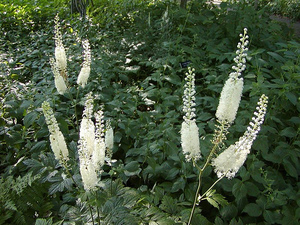 This plant is equally comfortable in open space and in the shade. But in any case, it is recommended for him to choose a place protected from drafts, otherwise this plant will not survive. Black cohosh grows poorly if planted too close to trees. The fact is that their roots will consume a certain amount of moisture and nutrients that are introduced when caring for a perennial.
This plant is equally comfortable in open space and in the shade. But in any case, it is recommended for him to choose a place protected from drafts, otherwise this plant will not survive. Black cohosh grows poorly if planted too close to trees. The fact is that their roots will consume a certain amount of moisture and nutrients that are introduced when caring for a perennial.- When growing black cohosh, it must be remembered that this is a rather large plant. Therefore, adult specimens require much more space than young plants.
- It is recommended to grow tsimitsifuga on moist soil, rich in humus and having a loose structure. It is helpful to mulch regularly to reduce moisture evaporation. However, it is undesirable to lay mulch near the base of the plant, otherwise moisture will begin to stagnate there, and soon the stem will begin to rot.During dry periods, watering alone is not enough, therefore, spraying must be carried out in addition to them.
- During the growing season, additional feeding is required. To do this, use mineral fertilizers, which must be applied to the soil in accordance with the instructions.
- Although black cohosh is a powerful plant, any strong wind can seriously damage it. A garter is recommended to protect its peduncles. First of all, this operation is necessary for tall specimens.
- During the season, black cohosh grows dense leaves that limit the spread of weeds. Therefore, when the bush becomes an adult, there will be no need for weeding by itself. Also, this plant is well protected from diseases and pests.
- The plant requires care throughout the season: in the fall, it is necessary to prune wilted panicles. This will help keep the black cohosh bush attractive. This is especially important for those varieties whose leaves are unusual.
- In order for the black cohosh to endure the winter well, in late autumn, complete pruning of the stems is carried out.
- You should not rely on the cold resistance of the culture, since even in this case the plant cannot do without shelter from fallen leaves. The rhizomes, which have grown strongly upward, primarily need such protection. However, if delicate species of black cohosh are grown on the site, then they, as a rule, die after a harsh winter.
How to breed black cohosh?
The main methods of plant breeding are - sowing seeds, dividing the bush and propagating by cuttings.
Sowing seeds
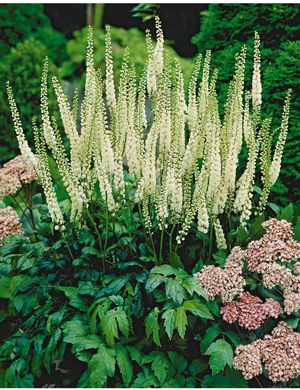 Until now, there are disagreements among specialists regarding the first breeding method. Some argue that it is best to sow the seeds after they have been harvested.
Until now, there are disagreements among specialists regarding the first breeding method. Some argue that it is best to sow the seeds after they have been harvested.
But there is a different opinion on this matter: before sowing seeds, it is imperative to harden by stratification, which is carried out for 6 months.
- for the first three months, the seeds are kept in a dry place at a temperature of 20 degrees Celsius;
- the rest of the time, the seeds should be refrigerated at 4 degrees Celsius.
Usually, these measures allow to ensure the full development of the embryo, as well as increase the percentage of germination. When the seedlings become adults, they are transferred to a permanent place, be sure to capture an earthen lump with the plants. When using this growing method, flowering occurs in two to three years.
Rhizome division
Plants are propagated by division best of all in early spring. Best for this operation use seedlings aged 5-6 years... However, keep in mind that the black cohosh rhizome is very stiff, so a sharp ax or shovel will be required to obtain planting material.
Conclusion
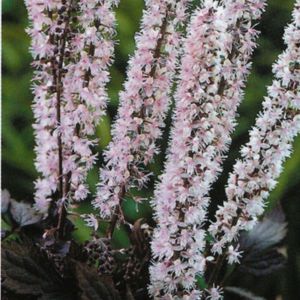 In search of an unpretentious plant to decorate their backyard, many owners often choose black cohosh. This plant fully meets expectations: it is very easy to grow it in our latitudes, also due to the fact that it perfectly tolerates any cold. Therefore, cimicifuga can be planted in open ground in early spring, without fear of frost damage. However, she still has there are certain featuresconcerning cultivation in open ground conditions. It must be remembered that black cohosh needs regular watering. Moisture should not stagnate in the soil, otherwise the plant may die without waiting for the moment of transplantation to a permanent place.
In search of an unpretentious plant to decorate their backyard, many owners often choose black cohosh. This plant fully meets expectations: it is very easy to grow it in our latitudes, also due to the fact that it perfectly tolerates any cold. Therefore, cimicifuga can be planted in open ground in early spring, without fear of frost damage. However, she still has there are certain featuresconcerning cultivation in open ground conditions. It must be remembered that black cohosh needs regular watering. Moisture should not stagnate in the soil, otherwise the plant may die without waiting for the moment of transplantation to a permanent place.
